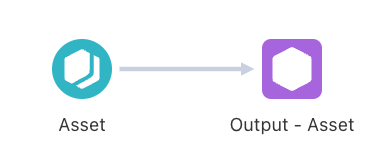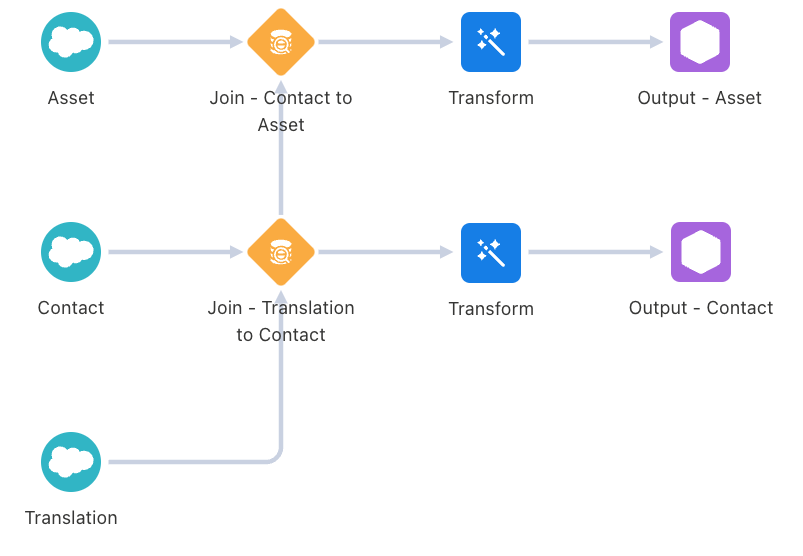If you’ve worked with data recipes in CRM Analytics, you’re no doubt very familiar with the process of inputting data from Salesforce into CRM Analytics. First, the process begins with adding your data connections on the “Connections” tab of the Data Manager. Here, you’ll add the objects, fields, and filters for the Salesforce objects you want to put into your recipe. Then, you’d navigate to your data recipe and find your connected objects.
However, if you’ve added an input node to data recipes since the Spring ‘23 release, you may have seen something a little different. You now have the option to add “Direct Data,” which allows users to bypass the first part of inputting data from Salesforce, adding data connections. This process lets you go straight into the data recipe, and start digesting your salesforce data in CRMA.
You can easily identify a direct data connection by its Salesforce cloud logo, while an input join will use the traditional input node imagery:
Direct Data Input Node
Connected Object Input Node
This new data digestion method got me thinking: Are there advantages of one over the other? Is direct data faster? Or is it just more convenient? We put this to the test below to see which method is faster, and understand what this new direct data input node is all about!
Testing whether the direct data connection is faster
The process here took a little over a minute to run:
When this Asset Node was replaced by the Data Connection.
But what if we made it a little more complicated?
In this second example, we’ve added two more input nodes, two joins, two transformations, and two further output nodes. These nodes are:
With these additional nodes, we clocked in at 1 minute and 24 seconds.
Swapping the same query to the data connection method, we ran into 14 seconds of run time for the connections themselves, and an additional 40 seconds for the remaining nodes to finish, reaching a total of 54 seconds of run time.
Making this even more complicated — adding three more input nodes, two more joins, and an additional transformation.
Using direct data, the recipe took nearly 2 minutes to complete, completing at 1:58 seconds.
For the data connection method, we clocked in at about 34 seconds of run time to complete the data connections, along with an additional 47 seconds for the recipe to complete. This gives us a grand total of 81 seconds, or 1 minute 21 seconds — nearly 40 seconds shorter than the direct data run!
CRM Analytics recipes: Data connections vs. direct data… What’s the verdict?
It looks like the direct data method for data recipes does work faster when you are working with a very simple recipe. The addition of even a few joins slowed down the recipe to the point that the traditional data connection method was faster. Adding more input nodes, transformations, and joins, slowed the direct data method down even further.
The decision to use one or the other truly comes down to what your organization values more — the convenience of being able to add data connections directly in the recipe, or the speed provided by connecting to your Salesforce objects prior to adding them to input nodes in the recipe. The choice is yours!
Learn more about our Salesforce CRM Analytics consulting services.




















